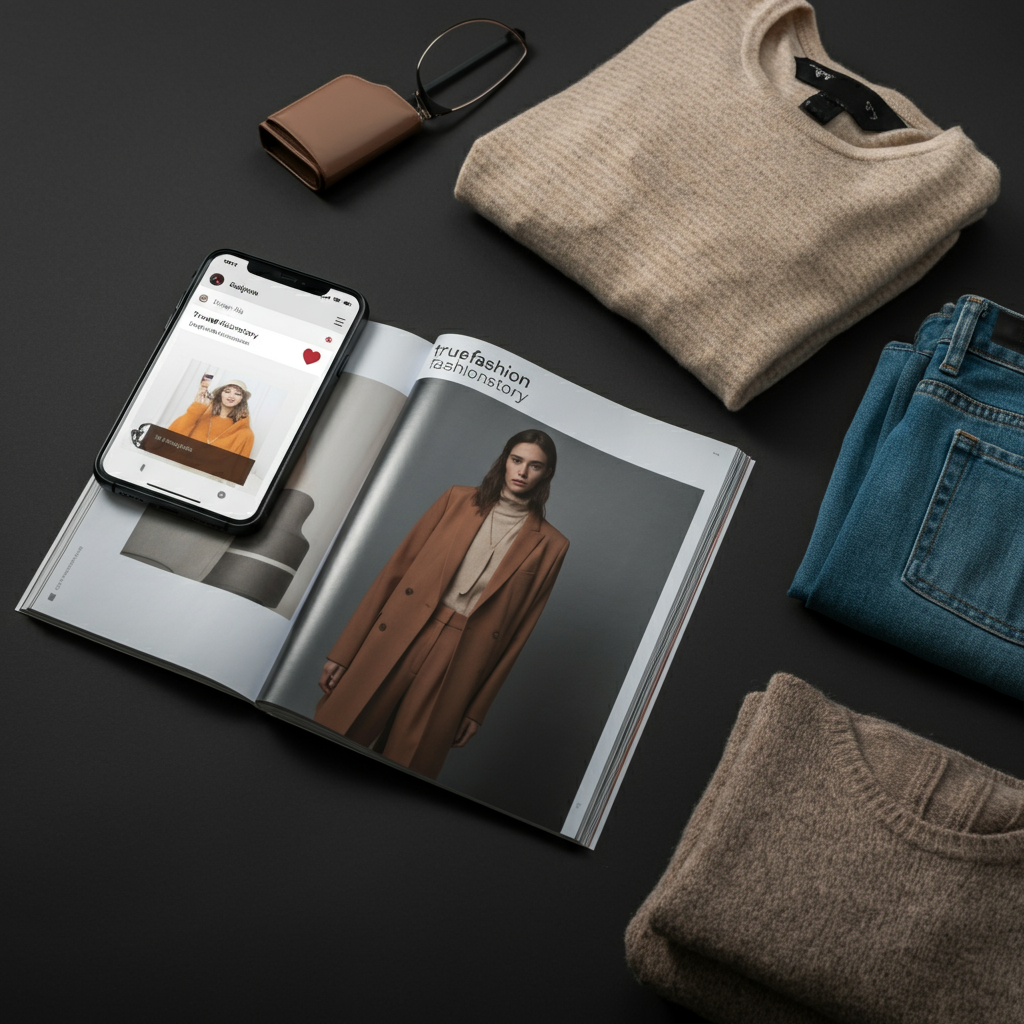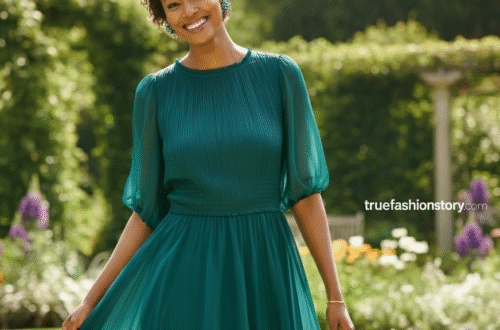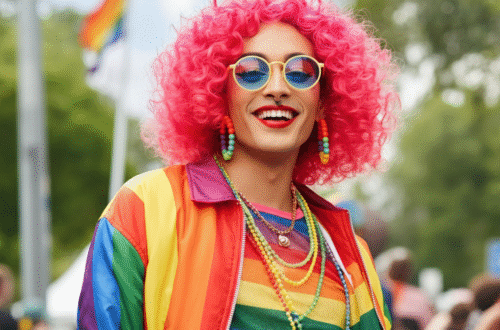Fashion is more than just clothing; it’s a statement, a form of self-expression, and a massive global industry. But how does a designer’s vision travel from the sketchbook to your closet? The answer lies in the dynamic and ever-evolving world of fashion marketing. This process is the engine that drives trends, builds iconic brands, and connects with consumers on an emotional level. It’s the art and science of making you fall in love with a brand before you even try on the clothes.
This guide will walk you through the essential strategies and concepts that define modern fashion marketing. We’ll explore everything from building a brand story to leveraging the latest digital tools, helping you understand how today’s most successful brands capture our attention and loyalty.
Key Takeaways
- Storytelling is Central: Successful fashion marketing isn’t just about selling products; it’s about weaving a compelling brand narrative that resonates with a specific audience.
- Digital Dominance: Social media, influencer collaborations, and e-commerce are the primary battlegrounds where fashion brands compete for consumer attention.
- Know Your Audience: Deeply understanding your target customer’s values, lifestyle, and preferences is the foundation of any effective marketing strategy.
- Authenticity Builds Trust: Modern consumers value transparency and authenticity. Brands that embrace genuine connections over hard-sell tactics tend to build stronger, more loyal communities.
- Adaptability is Key: The fashion landscape changes rapidly. The most successful marketers are those who can adapt to new technologies, cultural shifts, and consumer behaviors.
What Exactly Is Fashion Marketing?
At its core, fashion marketing is the strategic process of promoting and selling fashion products. This goes far beyond just placing an ad in a magazine. It involves a wide range of activities designed to understand consumer needs, build brand awareness, create desire, and ultimately drive sales. Think of it as the bridge connecting a fashion brand’s creative output with its target market.
This field encompasses everything from market research and product development to pricing, distribution, and promotion. A great fashion marketer knows they aren’t just selling a jacket; they are selling an identity, a lifestyle, or a feeling of confidence. They use storytelling to create an emotional connection, making a brand feel like a part of the consumer’s personal story. For more insights into how brands build these narratives, you can explore posts on truefashionstory.comBlog.
The Pillars of a Strong Fashion Marketing Strategy
A successful strategy is built on several key pillars that work together. Neglecting one can weaken the entire structure.
1. Brand Identity and Storytelling
What does your brand stand for? Is it sustainable, luxurious, edgy, or classic? Your brand identity is its personality. This is communicated through your logo, color palette, and the tone of voice you use. Storytelling brings this identity to life. It’s the narrative that explains your brand’s origins, its mission, and its values. For example, a brand that uses recycled materials has a powerful story of sustainability that can attract eco-conscious consumers. This narrative must be consistent across all marketing channels to build a recognizable and trusted brand image.
2. Deep Audience Understanding
You can’t effectively market to everyone. The most successful brands have a crystal-clear picture of their ideal customer. This involves creating detailed customer personas based on demographics (age, location, income) and psychographics (lifestyle, values, interests). Where do they shop? What social media platforms do they use? What inspires them? Answering these questions allows you to tailor your marketing messages, product designs, and overall brand experience to resonate deeply with the people you want to reach, ensuring your efforts aren’t wasted on an uninterested audience.
3. The Digital Marketing Mix
In today’s world, a strong digital presence is non-negotiable. An effective fashion marketing strategy utilizes a mix of online channels to reach customers where they spend their time.
Social Media Marketing
Platforms like Instagram, TikTok, and Pinterest are visual by nature, making them perfect for fashion. Brands use them to showcase new collections, share behind-the-scenes content, and engage directly with their community. TikTok, with its focus on short-form video and trend-driven content, has become particularly powerful for reaching younger audiences and creating viral moments. Instagram remains a hub for polished brand imagery and influencer collaborations.
Content Marketing
Content marketing involves creating valuable and relevant content to attract and retain an audience. For a fashion brand, this could mean:
- Blog posts on styling tips or the history of a particular garment.
- Video lookbooks showcasing a new collection in motion.
- How-to guides on caring for delicate fabrics.
This approach positions the brand as an expert and a helpful resource, building trust and keeping the brand top-of-mind.
Email Marketing
Email remains one of the most effective marketing channels for driving sales and fostering loyalty. Brands use email to announce new arrivals, offer exclusive discounts to subscribers, share personalized recommendations, and send reminders about abandoned shopping carts. A well-crafted email campaign can nurture leads and turn one-time buyers into lifelong fans.
The Power of Influencer Marketing
Influencer marketing has become a cornerstone of the industry. It involves collaborating with individuals who have a dedicated following on social media to promote products. These collaborations feel more authentic and relatable to consumers than traditional advertising.
An influencer, whether a mega-celebrity or a micro-influencer with a smaller, highly engaged niche audience, can lend credibility to a brand. When followers see someone they trust and admire wearing a certain piece of clothing, it acts as a powerful social proof. The key to successful influencer marketing is finding partners whose personal brand and audience align perfectly with your own. An inauthentic partnership can be spotted a mile away and may even damage your brand’s reputation.
The Evolution of Fashion Shows and Events
Fashion shows are no longer exclusive, industry-only events. Thanks to technology, they have transformed into major marketing spectacles. Brands now live-stream their runway shows on platforms like YouTube and Instagram, allowing anyone in the world to have a front-row seat. This democratization generates immense buzz and allows for instant feedback from a global audience.
Beyond the runway, brands are creating immersive pop-up shops, exclusive launch parties, and experiential events. These events are designed to be “Instagrammable,” encouraging attendees to share their experiences on social media and generate organic promotion. The goal is to create a memorable brand experience that goes beyond the screen and builds a real-world community.
Traditional vs. Digital Fashion Marketing
While digital channels dominate, traditional marketing still holds value. The key is understanding how they can work together.
|
Feature |
Traditional Marketing |
Digital Marketing |
|---|---|---|
|
Channels |
Print (magazines, newspapers), billboards, TV ads, direct mail |
Social media, email, SEO, content marketing, influencer marketing |
|
Reach |
Broad, often untargeted |
Highly targeted and specific |
|
Interaction |
One-way communication |
Two-way, interactive conversation |
|
Measurement |
Difficult to measure ROI accurately |
Highly measurable with detailed analytics |
|
Cost |
Generally higher cost |
More cost-effective and scalable |
A balanced approach often yields the best results. For example, a stunning photo shoot for a magazine (traditional) can be repurposed into social media posts, behind-the-scenes videos, and email newsletters (digital), maximizing the return on investment.
The Role of E-commerce and the Online Shopping Experience
A brand’s website is its digital flagship store. A seamless, visually appealing, and user-friendly e-commerce experience is crucial for converting browsers into buyers. This means high-quality product photography from multiple angles, detailed product descriptions with sizing information, and an easy checkout process.
Personalization is becoming increasingly important. Many online stores now use data to offer personalized product recommendations based on a customer’s browsing history and past purchases. Features like virtual try-on tools, which use augmented reality to show how an item might look on the customer, are also enhancing the online shopping experience. A great website makes shopping easy and enjoyable, reflecting the brand’s quality and attention to detail.
Looking Ahead: The Future of Fashion Marketing
The world of fashion marketing is always changing. Sustainability and ethical production are becoming major deciding factors for consumers, forcing brands to be more transparent about their supply chains. Technology will also continue to play a huge role. The rise of the metaverse presents new opportunities for virtual fashion shows and digital-only clothing (NFTs). Brands that stay ahead of these trends and continue to innovate will be the ones that thrive in the years to come. The ability to adapt and connect authentically with consumers will remain the most important skill of all.
Frequently Asked Questions (FAQ)
Q1: How do I start a career in fashion marketing?
A: A good starting point is a degree in marketing, communications, or fashion merchandising. Gaining experience through internships with fashion brands, PR agencies, or magazines is invaluable. Building a strong personal brand on platforms like LinkedIn and creating a portfolio of your work can also help you stand out.
Q2: How much does fashion marketing cost?
A: The cost can vary dramatically. A startup brand might focus on organic social media growth and content creation with a minimal budget. An established luxury brand, on the other hand, might spend millions on a single campaign involving celebrity endorsements, high-production video, and major event sponsorships.
Q3: What is the most important social media platform for fashion marketing?
A: It depends on the target audience. Instagram has long been the leader for its visual focus and shopping features. However, TikTok has become incredibly powerful for reaching Gen Z with its viral video format. Pinterest is excellent for driving traffic and sales, as users often go there for shopping inspiration.





